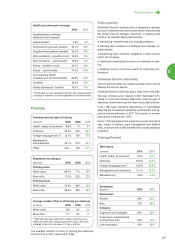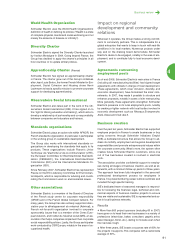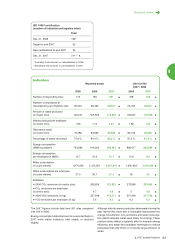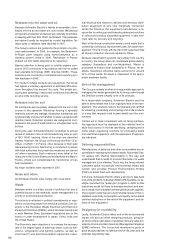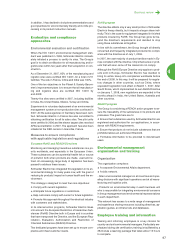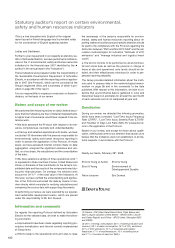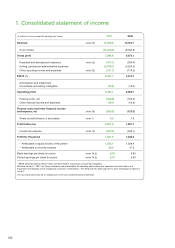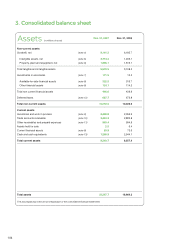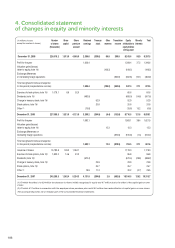APC 2007 Annual Report Download - page 98
Download and view the complete annual report
Please find page 98 of the 2007 APC annual report below. You can navigate through the pages in the report by either clicking on the pages listed below, or by using the keyword search tool below to find specific information within the annual report.96
Releases into the water and air
Because Schneider Electric is mainly an assembler, its re-
leases into the air and water are very limited. Mechanical
component production workshops are carefully monitored,
in keeping with their ISO 14001 certification. Their releases
are tracked locally as required by current legislation. No
major spills or releases were reported in 2007.
The Group’s actions are guided by the principle of contin-
uous improvement. In 2005, for example, the Beaumont-
le-Roger plant stopped using trichloroethylene as a
cleaning solvent, while in 2006, Rectiphase in France
phased out zinc metal spraying for its capacitors.
Special attention is being paid to volatile organic com-
pound (VOC) emissions in accordance with the so-called
best available technology (BAT) directive (96/61). These
emissions are covered by a comprehensive reporting sys-
tem deployed in 2005.
For medium voltage products and equipment, the Group
has signed a voluntary agreement to eliminate SF6 emis-
sions throughout the devices’ life cycle. This entails pro-
ducing and operating in leak-proof conditions and offering
an end-of-life recycling service.
Releases into the soil
No substances are purposely released into the soil in the
course of site operation. Workshop flooring is specially
treated to prevent any leakage. Hazardous substances are
systematically stored and handled in areas equipped with
retention tanks. Retention systems are designed to com-
pensate in the event of malfunctions or emergencies, such
as fires.
During the year, Schneider Electric conducted its annual
review of pollution risks at all manufacturing sites as part
of ISO 14001 tracking. None of the sites are classified
Seveso. However, the Group continuously monitors 13 fa-
cilities, of which 7 in France, often because of their past
manufacturing history. Monitoring is conducted in liaison
with local authorities and preventive measures are carried
out when necessary. Such measures were taken at the
Yates site in the United States and at Maizières-les-Metz in
France, where soil contaminated by transformer oil has
been excavated.
No major incidents were reported in 2007.
Noise and odors
All Schneider Electric sites comply with noise limits.
Waste
Because waste is a major source of pollution but also a
potential source of raw materials, waste management is a
priority in environmental protection.
This priority is reflected in political commitments or regu-
lations concerning waste from electrical products. One ex-
ample is the European Waste Electrical and Electronic
Equipment Directive (WEEE), which has been transposed
in each Member State. Equivalent regulations are on the
books or under development in Japan, China, India and
the United States.
The Directive’s main objective is to increase the recovery
rate of the largest types of electrical waste, such as tele-
visions, refrigerators and lighting systems, as well as
short-lived IT and telecommunication equipment. Indus-
trial electrical and electronic devices and electrical distri-
bution equipment is only very marginally concerned.
Under the Directive, the equipment manufacturer is re-
sponsible for setting up and financing dedicated solutions
to collect and process discarded equipment. It sets mini-
mum rates for recovery and recycling.
Most of the Group’s production waste is solid waste that is
covered by continuous improvement plans for waste man-
agement. This fits in fully with the ISO 14001 approach that
all Group production sites are required to follow.
Because classification systems vary widely from country
to country, the Group does not consolidate global data by
category (hazardous and non-hazardous). Waste is
processed to ensure local traceability. In France, for ex-
ample, hazardous industrial waste accounts for around
14% of total waste. All waste is channeled to the appro-
priate treatment facility.
End-of-life management
The Group is actively involved in a responsible approach to
managing the waste generated by its lineup even though
the Directive covers virtually none of its products.
As a responsible company, Schneider Electric must be
able to demonstrate that it has organized end-of-life man-
agement. The solutions need to be financed and certified
for collecting, processing and recycling end-of-life products
in a way that respects both human health and the envi-
ronment.
Carried out in close cooperation with all Group partners,
this approach must be deployed at the national level in
each host country. It involves identifying, certifying and in
some cases organizing solutions for processing waste
from electrical equipment, with the application of appropri-
ate indicators.
Defining responsibilities
Manufacturers of batteries and other consumables are re-
sponsible for managing the related waste. Schneider Elec-
tric agrees with sharing responsibility in this way, and
understands that it needs to provide information for waste
management to be effective. That’s why the Group informs
customers about its products’ environmental impact and
content and provides Product Environmental Profiles
(PEPs) to assist them with disassembly.
In Europe, Schneider Electric offers a service to take back
end-of-life products. Subsidiary MGE UPS Systems, for ex-
ample, launched the “Swap pac” program in 2006 so that
customers would not have to manage electrical and elec-
tronic waste from outdated uninterruptible power supplies.
The program comprises an environmental review of the in-
stallation’s electricity consumption and quality; removal and
certified destruction of the end-of-life equipment; and de-
livery of new equipment.
Designing for recylability
Lastly, Schneider Electric takes end-of-life environmental
impact into account when designing products, going be-
yond the simple calculation of potential recovery rates pro-
vided by Environmental Impact and Management Explorer
(EIME) software. The Group has developed a guide of
good design practices to optimize end-of-life costs and the
potential recyclability rate.



